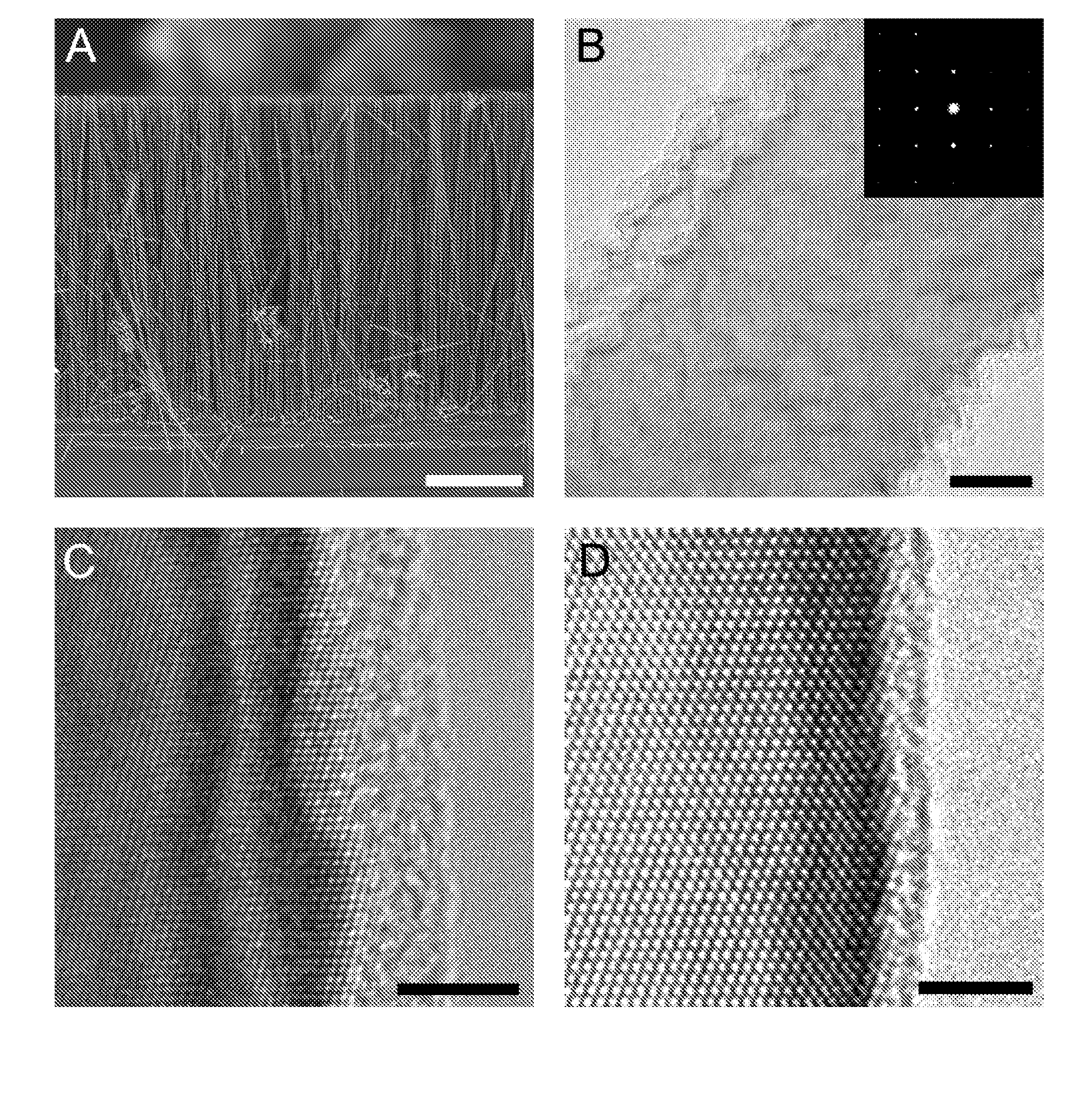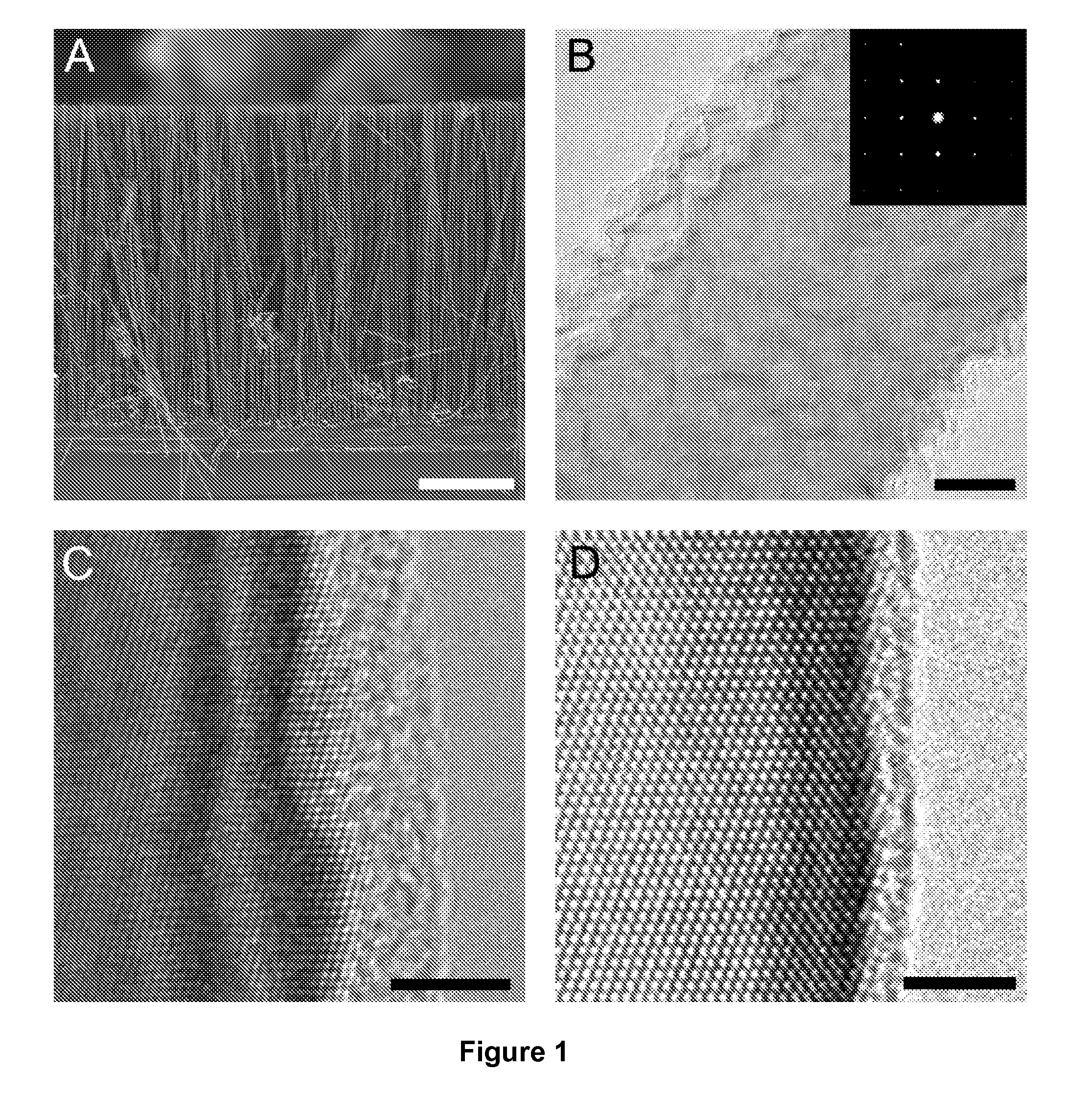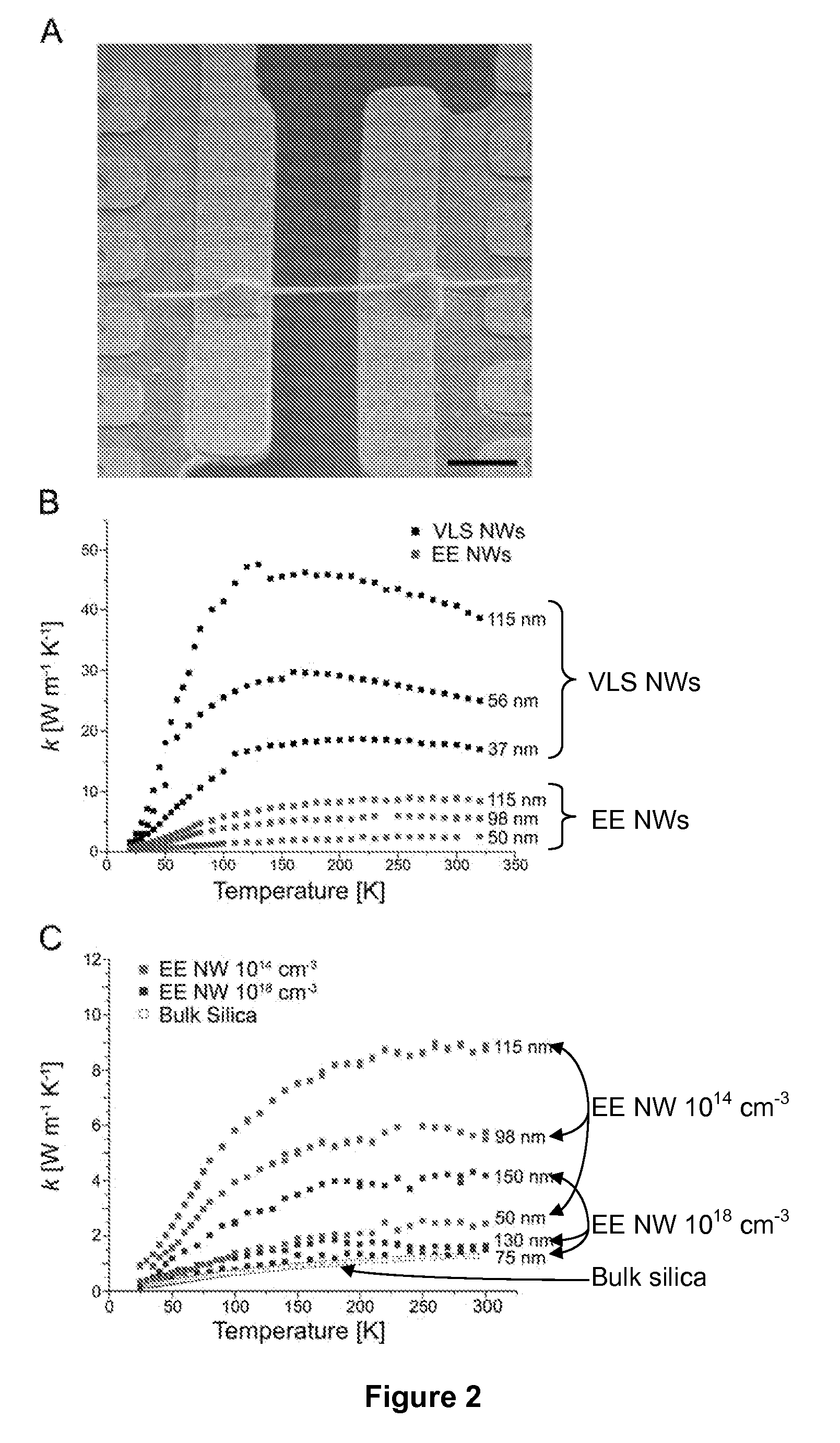Nanostructures having high performance thermoelectric properties
a technology of nanostructures and thermoelectric properties, applied in the field of nanostructures, can solve problems such as increasing zt>1, and achieve the effect of decreasing the temperature of a locality
- Summary
- Abstract
- Description
- Claims
- Application Information
AI Technical Summary
Benefits of technology
Problems solved by technology
Method used
Image
Examples
example 1
[0069]The most widely used commercial thermoelectric material is bulk Bi2Te3 and its alloys with Sb, Se, etc, which have ZT ˜1. While it is difficult to scale bulk Bi2Te3 to large-scale energy conversion, fabricating synthetic nanostructures for this purpose is even more difficult and expensive. Si, on the other hand, is the most abundant and widely used semiconductor with a large industrial infrastructure for low-cost and high-yield processing. Bulk Si, however, has a high k (˜150 W·m−1·K−1 at room temperature) (Touloukian, Y. S., Powell, R. W., Ho, C. Y. & Klemens, P. G. Thermal Conductivity: Metallic Elements and Alloys, Thermophysical Properties of Matter, v. 1, IFI / Plenum, New York, 339 (1970)), making the ZT ˜0.009 at 300 K (Weber, L. & Gmelin, E. Transport properties of silicon. Appl. Phys. A 53, 136-140 (1991), which are hereby incorporated by reference in their entireties). The spectral distribution of phonons contributing to the k of Si at room temper...
example 2
[0079]Nanowire synthesis. The standard nanowire synthesis was conducted on B-doped p-type (100) Si wafers. Wafer chips were sonicated in acetone and 2-propanol, and then put in a Teflon-lined autoclave in aqueous solution of 0.02 M AgNO3 and 5 M hydrofluoric acid (HF). The autoclave was sealed and placed in an oven at 50° C. for one hour. For 150 μm-long nanowires, wafer chips were prepared in the same fashion, and placed in the autoclave with 0.04 M AgNO3 and 5 M HF for four hours. Nanowires were also etched from entire Si wafers. Wafers were cleaned and placed in a Teflon dish with an identical etching solution and the synthesis ran at room temperature. The wafers etched in the open dish at room temperature produced wires similar to those etched in the autoclave but <50 μm in length. The same reaction conditions were used on wafers of all orientations, dopant type and concentration. Small regions on all samples had nanowires etched at an angle to normal.
[0080]Nanowire characteriza...
PUM
 Login to View More
Login to View More Abstract
Description
Claims
Application Information
 Login to View More
Login to View More - R&D
- Intellectual Property
- Life Sciences
- Materials
- Tech Scout
- Unparalleled Data Quality
- Higher Quality Content
- 60% Fewer Hallucinations
Browse by: Latest US Patents, China's latest patents, Technical Efficacy Thesaurus, Application Domain, Technology Topic, Popular Technical Reports.
© 2025 PatSnap. All rights reserved.Legal|Privacy policy|Modern Slavery Act Transparency Statement|Sitemap|About US| Contact US: help@patsnap.com



